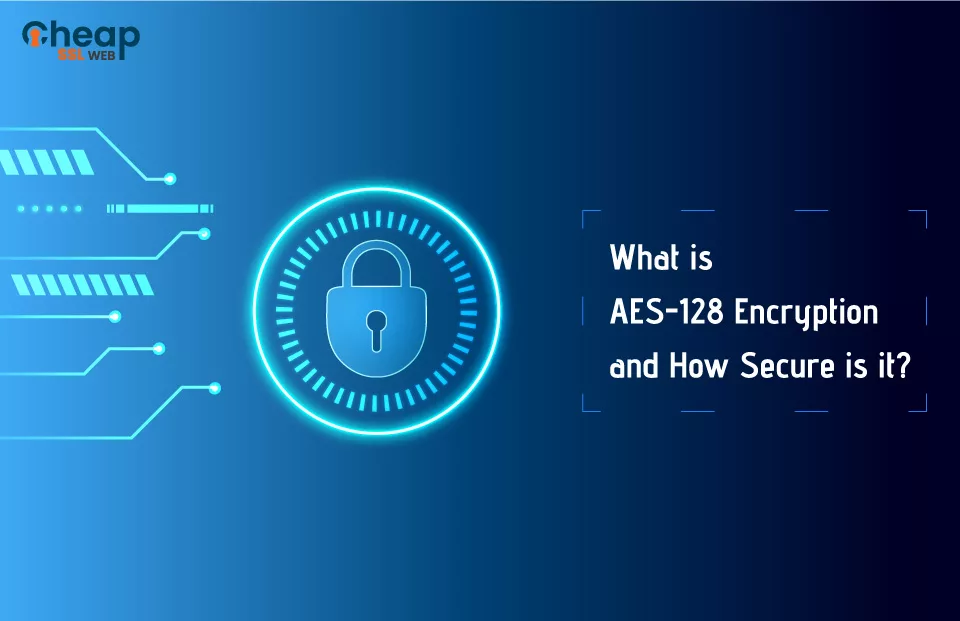What is AES 128 Bit Encryption and How Secure AES 128 Bit is?

AES 128 Bit Encryption: What is it and is 128 bit AES encryption secure?
As technology continues to advance, keeping sensitive data safe has never been more important. Every day, the internet is vulnerable to cyber-attacks as individuals transmit sensitive information, whether it be for online banking or personal communication. Encryption technology is used to safeguard information, and AES 128-bit encryption is one of the most popular encryption algorithms. Organizations across the globe rely on AES encryption and RSA Encryption as the gold standard for protecting sensitive information.
AES stands for Advanced Encryption Standard that emerged as a superior encryption model to the widely-used Data Encryption Standard (DES) due to the latter’s vulnerability to brute force attacks. Organizations across the globe rely on AES encryption as the gold standard for protecting sensitive information. With AES, you can secure your data in three different strengths: 128, 192, and 256 bits.
However, in this blog, we will explore what AES 128-bit encryption is, how it works, and why it is an important tool for protecting sensitive data.
What is AES 128 Bit Encryption?
AES 128 is an example of a symmetric encryption technique that uses the same cryptographic key to encrypt and decrypt data, making it a quick and effective solution.
It is based on the substitution-permutation network (SPN) model. The algorithm splits the input data into 128-bit blocks for its use, and then each block is encrypted using a round function. The round function combines substitution and permutation operations and applies them repeatedly to the block of data. The key size determines the number of rounds in the round function, and a 128-bit key size has 10 rounds.
The key expansion procedure creates a larger key schedule, which in turn helps to produce the key schedule for each round. Performing a series of operations on the original key generates a series of round keys, which produces the key schedule. The process uses these round keys during every round of encryption and decryptions.
As there are many different possible keys available with AES’s 128-bit key size, it is challenging for attackers to predict or decrypt the key. The substitution and permutation operations, that make the algorithm resistant to many types of assaults, also boost the program’s security.
Is 128 Bit AES Encryption Secure?
Several online software and web packages use AES 128 encryption to secure sensitive data. These are a few typical examples that prove how secure AES 128-bit is:
- Online communication: The AES 128 algorithm encrypts internet communication, including email, instant messaging, and financial transactions. This aids in defending against hackers and other online criminals using personal and financial information.
- Data Storage: It encrypts data stored on local devices or cloud servers to shield sensitive data, like passwords and financial information, from unauthorized access.
- Mobile Devices: Mobile devices like smartphones and tablets use AES 128 for encryption. This prevents unauthorized users from accessing private information, including contacts, messages, and media files.
- File Transfer: People use AES 128 to encrypt all files they send over the internet, including media files and huge documents. Encrypting files with AES 128 helps prevent unauthorized parties from intercepting or accessing data during transfer.
- Software protection: Commercial software often employs AES-128 to prevent copying or reverse-engineering, safeguarding intellectual property and thwarting piracy.
How Secure is 128 Bit AES Encryption Against Brute Force Attacks?
The vast number of possible keys that can be generated makes AES-128 highly secure against brute force attacks. The key size of AES-128 is 128 bits, which means that there are 2^128 possible keys. That’s a staggering number, equivalent to 340 undecillion (340 followed by 36 zeros) possible keys.
To perform a brute force attack on AES-128, one must attempt every conceivable key combination until the correct key is discovered. However, the number of possible keys is so large that it would take billions of years to try them all using even the most powerful computers available today.
If we imagine that every person on Earth has a computer capable of checking a billion keys per second, and they all work together to crack a single AES-128 key, it would still take billions of years to try all possible keys.
We consider AES-128 to offer incredibly robust protection against brute-force attacks. We should remember that the security of AES-128 also relies on the dependability of the key utilized and the security of the system utilized for encryption. Thus, it’s essential to use strong, unique keys and follow industry best practices for system security in order to obtain the highest level of security.
Concluding Two-Cents on AES 128 Bit Encryption
Businesses worldwide utilize 128-bit AES as a highly intricate encryption technique to safeguard sensitive data. With 2128 potential key choices, AES-128 provides an astronomically high number of key combinations for 128-bit encryption. AES-128 is hence impossible to crack and impervious to future security flaws.
Remembering that correct implementation and key management are necessary for AES-128 encryption to function well is crucial. Insecure key storage makes it simple for hackers to access private information. In order to ensure that AES-128 offers strong protection against potential assaults, it is crucial to adhere to standard practices for key management.